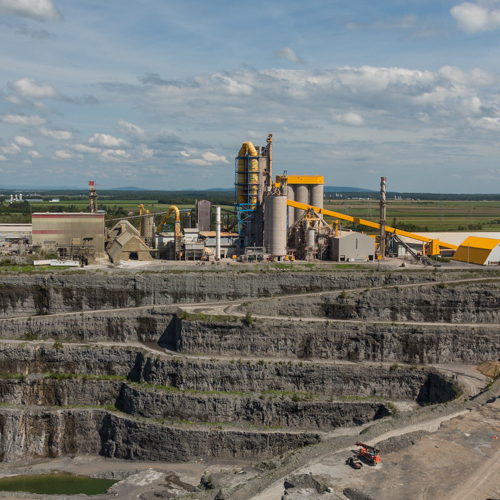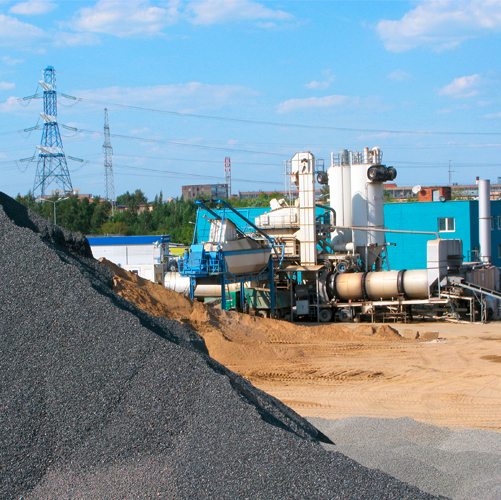It’s now an alternative. The new absorption heat pump technology is added to the options of customers who want to increase their buildings’ energy performance. The results of the demonstration project are available after more than one year of continuous measurement. This is a promising technology, because it is the only one that can provide heating temperatures higher than 45°C (115°F) by adapting it to a geothermal system. It is also the only technology that can operate as air source heat pump (ASHP) from outdoor temperatures as low as -29°C.
The versatility of natural gas, which achieves 95% heating efficiency levels by condensing water vapour from its own combustion, is thus reaching new highs. Its efficiency now achieves levels ranging from 120% to 135%.
A successful demonstration
In spring 2005, Gaz Métro’s DATECH Group undertook a commercial demonstration of the performance and reliability of natural gas ground source heat pump, a first in North America. The Montréal engineering firm CIMA+ integrated a natural gas geothermal option into its plans and specifications for renovation of one of the multiple buildings of the Benny Farm housing complex. Unlike the complex’s other buildings, the 24 units belonging to Société d’habitation et de développement de Montréal (SHDM) accepted this option. The costs of this implementation amounted to $140,000 for five vertical wells 168 metres deep and three Robur heat pumps with a single-pump capacity of 38 kW (130 MBh) for heating and 18 kW (5 tonnes) for air conditioning.
The building’s original cast iron hot water system was kept for greater comfort and due to the fact that it can handle lower temperatures efficiently. Startup of the units was in March 2007, and after one year of mea-surement, the results meet the reliability and efficiency expectations.
An excerpt of the efficiency results measured on a monthly basis by the Natural Gas Technologies Centre (NGTC) is also presented below. They corroborate the manufac-turer’s specifications (G.U.E. is similar to COP). Note that as in any geothermal project, efficiency varies according to the temperature of the well (evaporator) and the heating temperatures (condenser). The physical accuracy of the possibility of obtaining a temperature of 60°C (140°F) on the evaporator could have been verified.
Comparative application scenarios
Two theoretical scenarios of the heating needs of these 24 housing units were simulated for comparison: a hot water-heated radiant floor system (low temperature) and a cast iron heat transfer system (medium temperature). For each scenario, three technologies were evaluated on the basis of a standard heating installation to define the energy cost of the different possibilities.
Scenario 1
Considering that geothermal electricity requires auxiliary backup (70%/30% rule), we find that for the same new commercial building, geothermal natural gas would not necessitate auxiliary heating for use of the same ground sink, while the energy costs of heating would be totally comparable.
Scenario 1: THEORETICAL COMPAriSON OF DIFFERENT OPTIONS RELATED
TO A PROJECT WITH HOT WATER-HEATED RADIANT FLOORS (evaporator input T° = 5°C; condenser output T° = 46°C (115 °F)
| Basic volume for a standard installation Building heated with conventional equipments (75% efficiency) – Reference volume 52,800 m3/year or $28,456/year (2000 Gj/year) at 20% ECDear) | ||
| Condensing boiler | Geothermal with electricity | Geothermal with natural gas |
|
|
|
Scenario 2
On the other hand, for higher temperatures, as in the case of a medium or high-temperature water system, it is not adequate to use geothermal electricity, because the compression technologies do not produce the desired performance with Canada’s soil temperatures.
Scenario 2: THEORETICAL COMPARISON OF DIFFERENT OPTIONS RELATED
TO A PROJECT WITH A CAST IRON HEAT TRANSFER SYSTEM (DEMO PROJECT) (evaporator input T° = 5°C; condenser output T° = 60°C (140°F)*
| Basic volume for a standard installation Building heated with conventional equipments (75% efficiency) – Reference volume 52,800 m3/year (2000 Gj/year) at 20% ECD | ||
| Condensing boiler | Geothermal with electricity | Geothermal with natural |
|
|
|
* Note that the measured average temperature of the building’s heating loop was 120°F but that theoretically it could be 140°F.
An efficient technology for modernization of existing buildings
Most of the time, the hot water heating systems of existing buildings do not operate at low temperatures as in the case of radiant floors. The design temperatures range from 50°C (120°F) to 90°C (200°F) at input. Yet the feed water temperature of geothermal electrical heat pump is rarely higher than 45°C (115°F). Above this temperature, the life cycle of geothermal compressors decreases very rapidly. In fact, at a feed hot water temperature of more than 45°C (115°F) and a well temperature of 1°C (35°F), it is possible to end up with unpleasant surprises, because very high mechanical stresses are exerted on the compressor. This is not the case with natural gas absorption technology.
In cooling modes, the absorption heat pump is less efficient than the electric heat pump. Therefore, within the context of modernization of an existing building’s heating system, the option of dehumidifying only the air make-up during hot weather could prove to be an inexpensive and efficient air conditioning solution, by storing energy in the soil in summer for reuse in winter geothermal heating. Furthermore, within the context of the right energy in the right place, there is good reason to believe that air conditioning can be accomplished with electrical technology while heating can be achieved by natural gas absorption heat pump technology, all through geothermal wells common to both technologies. (see Magazines Gaz Québec, Autumn 2007, and La Maîtrise de l’Énergie, March 2008).
Moreover, given that its COP is lower, it was estimated that geothermal natural gas necessitates a ground heat exchanger 40% shorter than conventional geothermal, for identical heating needs. This can turn out to be a compromise solution for well drilling investments.
In conclusion, it is interesting to note that units can also be installed both indoors and outdoors, but this time using air instead of soil as the heat sink. These units are natural gas ASHP (see above image). Since absorption heat pumps do not have a mechanical compressor, they can withstand extreme temperatures and thus can operate at temperatures as low as -29°C. This contrasts
with the usual air-to-air heat pumps, which operate down to -5°C. These air/water units can also heat water to 60°C (140°F).
Finally, water-to-water absorption heat pumps can be used very efficiently in any industrial or commercial heat recovery project.
| ADVANTAGES OF NATURAL GAS GSHP | ADVANTAGES OF NATURAL GAS ASHP |
|
|
Sébastien Lajoie, Eng. CEM
Technical Advisor
DATECH Group
Continue reading











